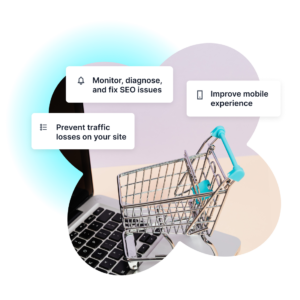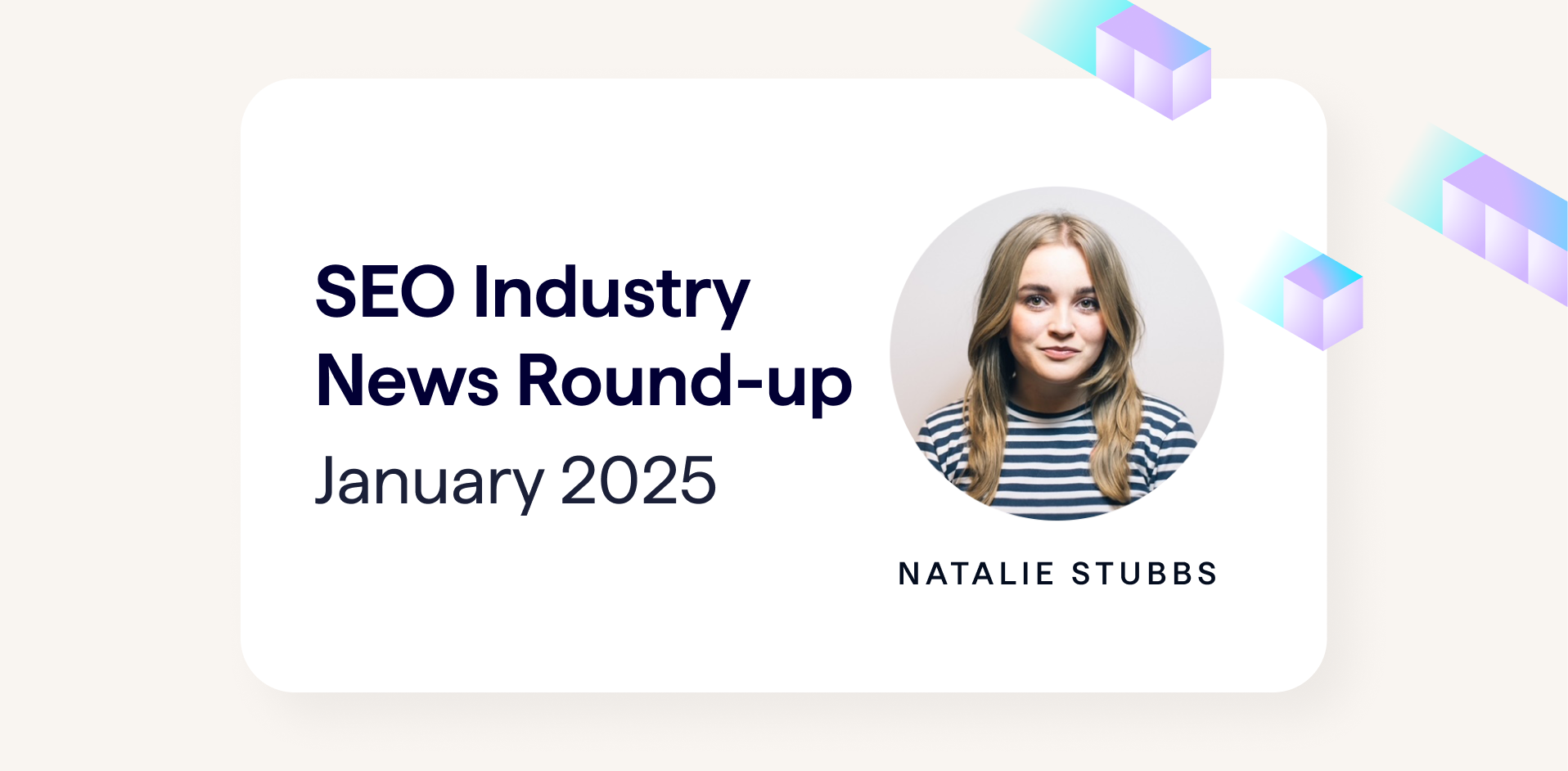Last week, hundreds of SEO professionals gathered in London for the latest Women in Tech SEO Festival, which fell on 8th of March 2024 – International Women’s Day – this year. Talk topics covered technical SEO and digital marketing strategies, bias in generative AI, and professional and personal development for those working in the SEO industry.
Read on for key takeaways from the SEO-focused conference talks — and don’t forget to sign up for the next WTS events:
- June 7, 2024 in Berlin
- September 19, 2024 in Philadelphia (Sponsored by Lumar!)
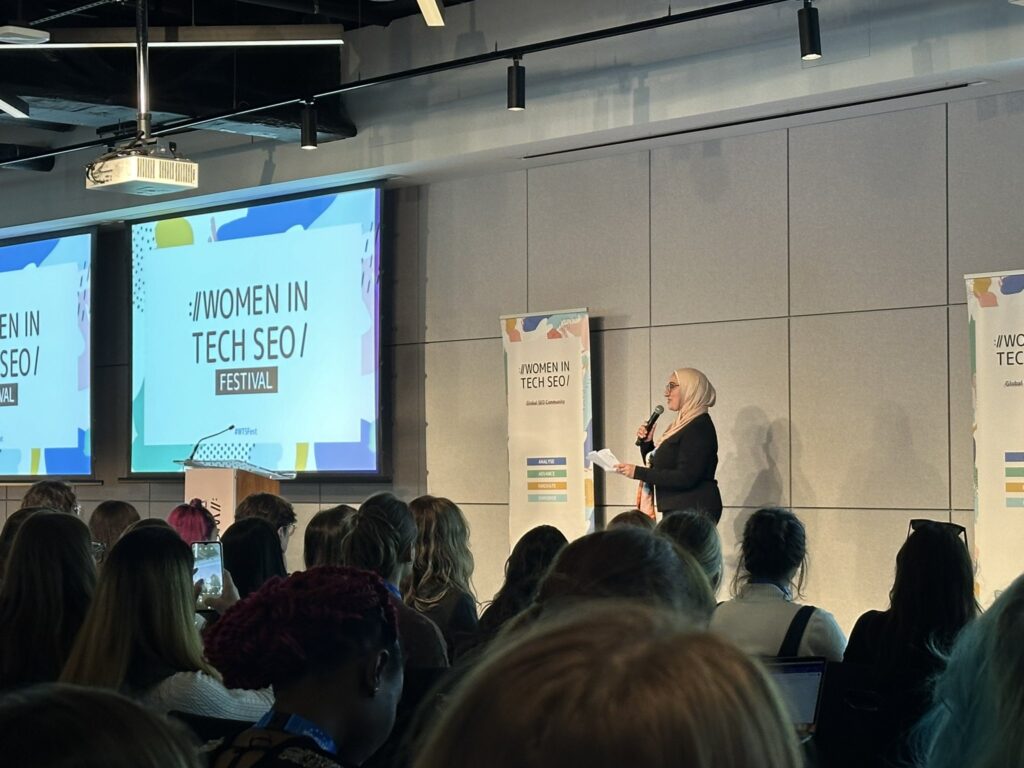
Grace Frohlich: Search Integration – How to Reunite SEO & PPC (Talk Summary)
Grace Frohlich, an SEO consultant at Brainlabs, kicked off the conference with a deep dive into how search professionals can integrate PPC and SEO for better business-level results.
When SEO and PPC teams are working in silos it can be more difficult to achieve broader business results. What’s more — there are potential cost benefits to be realized by aligning your SEO and PPC efforts in a more holistic search approach. After all, if you’re already ranking well organically for a key search team, do you really need to invest additional ad spend targeting that same keyword in PPC?
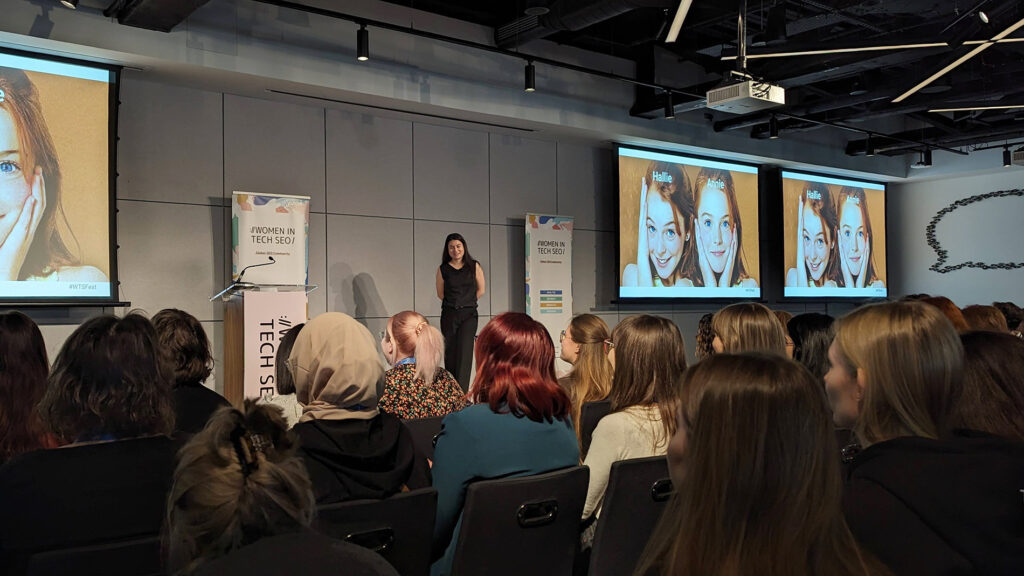
To better integrate SEO and PPC, Grace recommends:
- Getting to know your PPC team: What are their current campaigns and initiatives? What are their challenges and pain points in paid search? How do these goals and challenges compare to your work on the SEO side of things?
- Sharing data sets between PPC and SEO: Both teams should share their highest-performing keywords and the on-page optimizations they have seen results from in terms of both conversions and rankings. Look at your Google Ads data to review conversion rates and cost per conversion in this channel — consider how organic search efforts might be able to help drive down costs on high CPC keywords. Also look at your PPC audience data — which audiences have higher conversion rates and CTRs? This can help SEO teams build more complementary organic content for those high-converting audiences.
- Align your PPC and SEO roadmaps: Look at upcoming campaigns in both channels and create joint testing roadmaps and joint roadmaps in general.
- Form a unified plan: Choose objectives together (for example, increasing revenue, improving brand awareness, etc.) and create a unified multi-channel strategy across PPC and SEO to better reach those goals. Combine your plans into one document to share with stakeholders and show your united strategy.
- Measure and report: Reporting on metrics across both paid search and organic search in one place can help you measure your progress toward your unified goals and prove the benefit of a holistic search strategy to stakeholders. Look and commonly shared metrics between PPC and SEO like clicks, impressions, conversion rates, share of voice, returning visits, etc. (Bonus: build a combined dashboard.)
“I’m guilty of mostly viewing PPC as a separate entity to SEO, Grace went through a case study where this union resulted in gains for both sides. Really interesting talk and loved the parent trap slides!” – Michelle Race, Senior Technical SEO, Lumar
For more from Grace, check out her PPC + SEO Integration Checklist or follow her on LinkedIn.
Stevy Liakopoulou: Video-Centric E-commerce Strategies (Talk Summary)
SEO specialist Stevy Liakopoulou of Search Magic presented on video-centered e-commerce strategies for 2024. Videos, she said, are the perfect medium to communicate how a product can meet a user’s needs.
Sharing data on video marketing collected by Wyzowl, she explained that 87% of marketers surveyed say that their video marketing efforts have directly increased sales — and 82% say that video has helped them keep visitors on their website longer (ie, improved dwell time).
Stevy recommends the following types of video content for e-commerce websites:
- Demonstration videos — Customers may be concerned that what they receive in the post won’t match the image shown on a website — video helps customers trust in the product more.
- Behind-the-scene videos — Showing how the product is made and who works on it. These types of videos feel more human and help build trust in the company as a whole.
- Unboxing videos — These can be helpful when collaborating with influencers so you can introduce your product or brand to new audiences.
- Comparison videos — You may want to target competitors’ branded search terms here and show key differentiators between their products and yours.
When it comes to SEO and videos, Stevy recommends:
- Conducting advanced keyword research to inform video production: Research which topics related to your offering people are searching for most and create videos around these search terms.
- Embedding videos on your website (not just hosting them on YouTube or Vimeo) to increase user engagement, reduce bounce rates, and increase opportunities for backlinks to your site.
- Providing context for videos on your site: Don’t simply publish a video on a blank page — create a text introduction, include keywords and FAQs, etc. to provide more context for the video content.
- Creating more vertical-oriented videos for easier mobile phone viewing.
- Ensuring your videos have closed captioning or subtitles available: This helps improve your website accessibility and helps you comply with WCAG rules relating to time-based media on web pages.
To hear more from Stevy, you can subscribe to her newsletter, visit liakopoulou.com, or follow her on LinkedIn.
Rasida Begum: Linking Technical SEO Fixes to Performance Milestones (Talk Summary)
Next up, organic strategy director Rasida Begum took the stage with actionable tips on how to link technical website fixes to performance milestones in your business.
Many SEOs find it difficult to show the impact of their technical SEO projects. This can cause them to hit blockers in trying to launch new tech SEO initiatives if they cannot secure buy-in and resources from stakeholders.
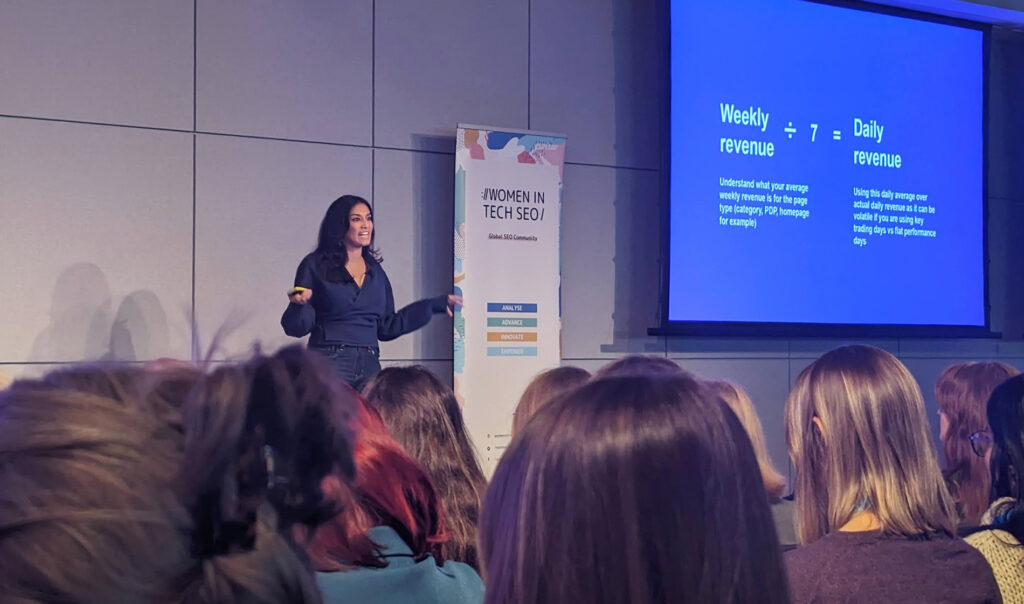
Rasida recommends that SEOs take the time to understand their data in order to make a strong case for increased investment in technical SEO. Categorizing your landing pages and the sales or leads generated by each landing page or group of landing pages and then forecasting revenue implications from this data can help stakeholders understand the real business impact that these projects will have.
Creating forecasts that show the impact of your SEO work with data is crucial for objection handling as well. As Rasida shared on LinkedIn: “Put a forecast number in front of people and don’t be scared! Great thing about forecasts is they are objective so they should be challenged with numbers. Not ‘I don’t agree’.”
She suggests presenting forecasts for things like how much revenue may be lost by not addressing a technical SEO issue sooner rather than later. Consider how much time it will likely take to fix a technical issue and look at how much risk there is to the revenue that is generated by those pages. Being realistic about your time-to-fix projections can also help you get buy-in for additional resources, as you can also show what could be achieved, ideally in shorter timeframes, if you had added team resources.
“Rasida gave a useful tip to get a generic keyword CTR by excluding brand keywords using GSC filters Can’t stop taking pictures of the slides as I want to burn these into my memory! So helpful to go through this step by step.” – Michelle Race, Technical SEO, Lumar
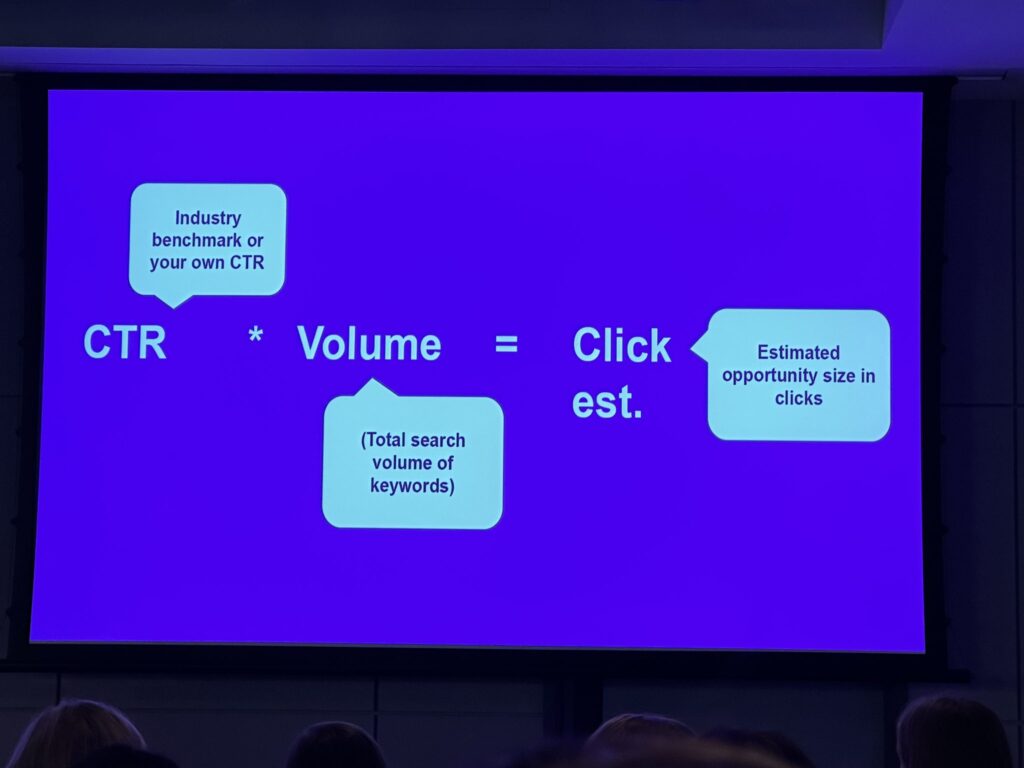
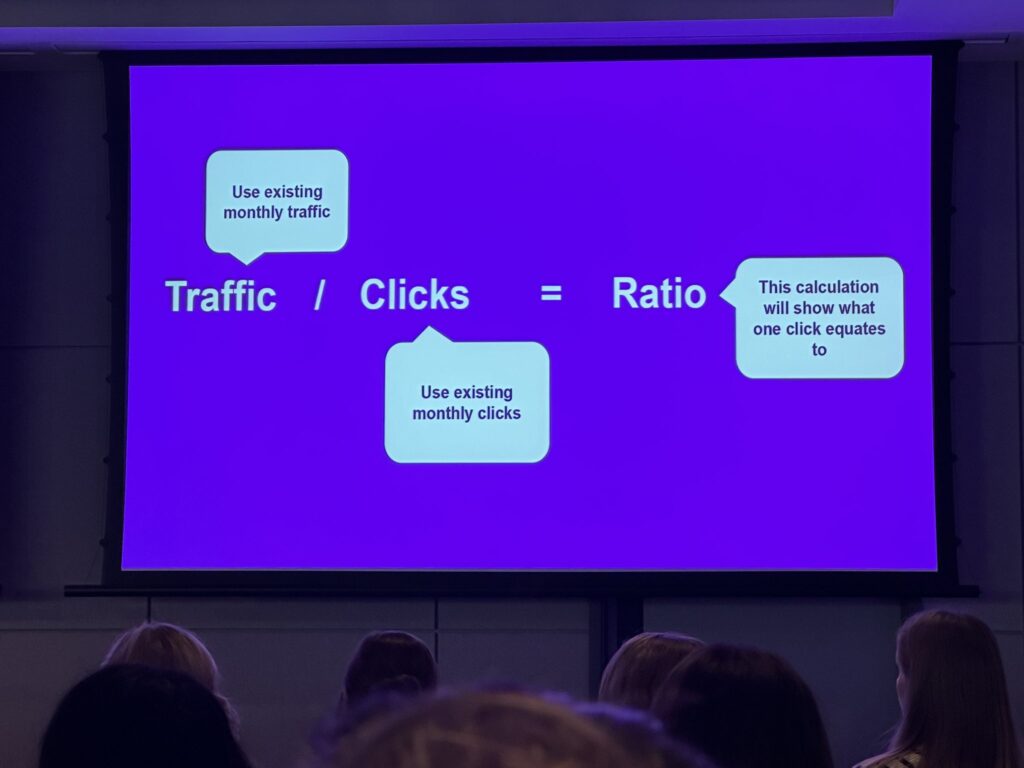
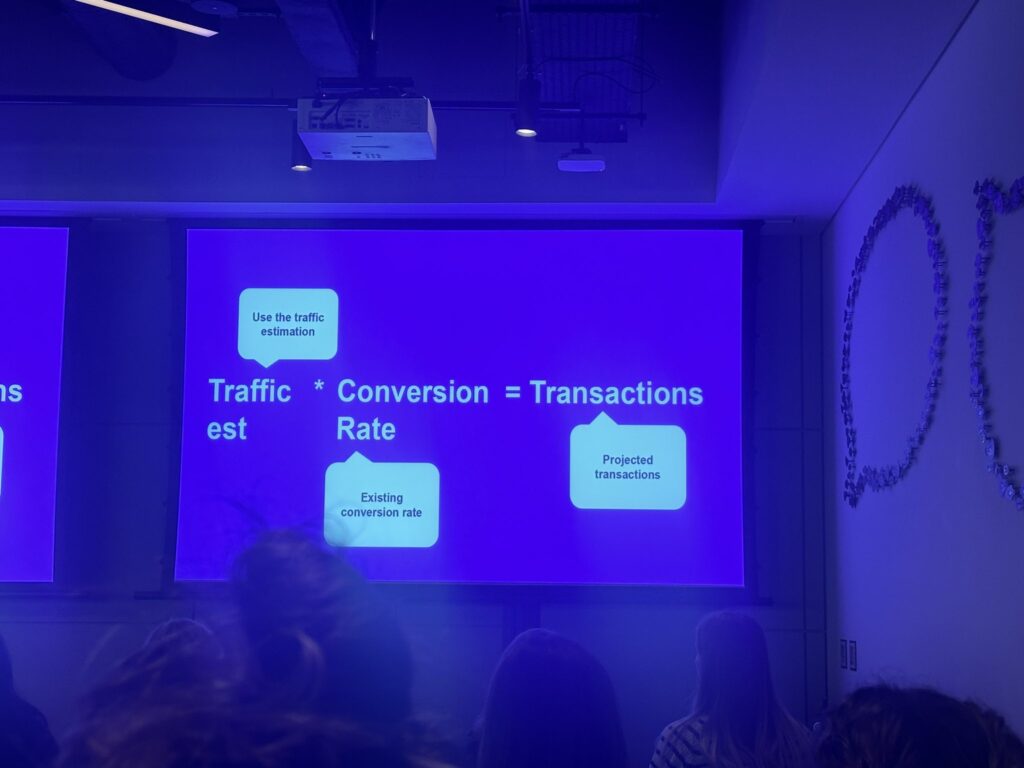
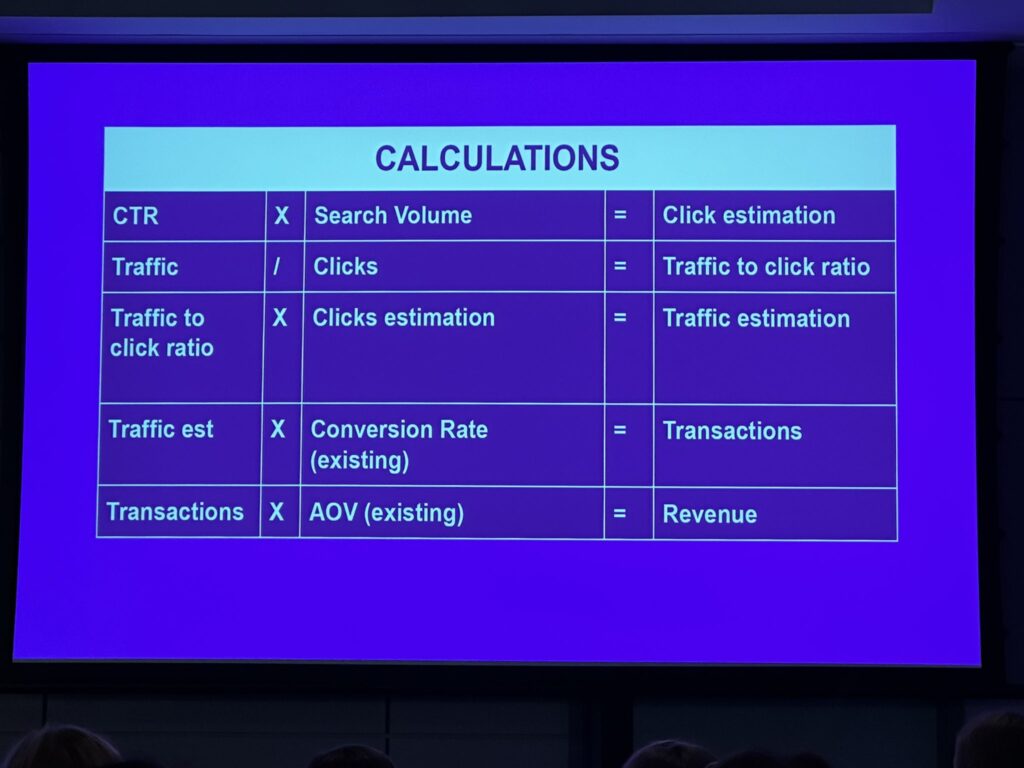
For more from Rasida, check out her incredible SEO Forecasting Calculator, check out her WTS slides, or follow her on LinkedIn.
For more tools that help you show the impact of your technical SEO projects, check out Lumar Impact.
Emma Russell: E-Commerce and Consumer Trends for 2024 (Talk Summary)
Emma Russell, SEO expert and founder of Oxford Comma Digital provided a deep dive into current consumer trends in e-commerce.
Looking at a variety of studies on consumer behavior, she shared that though consumer spending decreased last year in the face of cost-of-living crises globally, the rate of decrease in consumer spending is slowing. While people cut their spending notably in 2023, by comparison in 2024, surveys have shown that consumers intend to cut their spending by less this year than they did last year. And for high-income consumers, they are projected to spend more in 2024 (not cutting spending at all).
Some trends to note in consumer behavior include:
- Overall, consumers are still purchasing, but they are spending less than they used to. However, consumers are likely to be less aggressive about cost-cutting in 2024 compared to last year.
- People are prioritizing food and grocery spending over other types of spending.
- The comparison stage of the buying process is now much longer and more complex than it used to be.
- Buyers’ consideration phase includes delivery options — for cost-conscious consumers, a no-cost delivery option that takes longer may be preferred over a faster but more expensive delivery option.
- During the last major recession, consumer spend on “fair trade” products increased, while spending on “organic” products dropped.
Emma suggests a variety of ways that digital marketers and SEOs can cater to consumers’ projected needs and behaviors in 2024, including:
- Index website content for more long-tail keywords: “The long tail attracts buyers, not browsers.” Emma points out that someone who types in “blue work dresses” rather than just “dresses” as their search term knows what they want — they are less likely to just be browsing and more likely to actually make a purchase.
- Nail search intent: Businesses need to be in the right place, at the right time, with the right page, when it comes to organic search. This means you need to get search intent right when creating your content for targeted keywords. Even if you get a click from the SERPs, if the search intent isn’t being met by your page content, it’s likely not going to convert.
- Treat landing pages as a conduit to deeper pages within your site: Take a page from UX here and consider what happens after someone clicks through to your landing page from Google. What do you want them to do next? What other content can you link to that will help satisfy their search intent or help them make a purchase?
- Avoid overcategorization on e-commerce sites: While SEOs might want more category pages for more indexed pages, if not implemented correctly, it could be bad for UX. Think about your navigation and sub-navigation on category pages — are you missing breadcrumbs, sitelinks, etc?
- Make product comparisons easier: Show trending products, top sellers, sale items, in-stock items, etc. to make it easier for users to find the product pages that will appeal to them most.
- Prioritize product reviews: With consumers taking longer and more convoluted routes through their consideration stage, product reviews are going to be more important than ever.
- Properly divulge eco-friendliness and fair trade features: Sharing information about products that are eco-friendly or that incorporate fair trade practices can help consumers make their purchasing decisions.
For more e-commerce SEO tips, check out Emma’s WTS Slides or follow her on LinkedIn.
Joyann Boyce: Starting With Bias in AI Might Be the Solution (Talk Summary)
Joyann Boyce, the founder of Inclued AI, took the stage to discuss how businesses can create more inclusive content by being more intentional with their use of generative AI — and how future AI tools built to combat that bias rather than generate more of it may help.
With the growing adoption of AI tools, it’s become clear that relying on standard AI outputs can lead to a lack of diversity and inclusion in the content that’s being produced. As Joyann said, “The algorithms we’re interacting with have been trained on content from the internet —and that content may be full of bias.”
She gives the example of Twitter’s photo-cropping algorithm back in 2020, which tended to orient photos toward white faces — users testing it for themselves on Twitter found that the automated photo-cropping almost always focused on white, male individuals. As Bloomberg News put it in a headline last year: “Humans are biased. Generative AI is even worse.”
As marketers, we need to be careful about how we use generative AI. If more and more content on the internet is likely to be generated, at least in part, by AI tools, then we may end up with even more biased content than we already have on the internet.
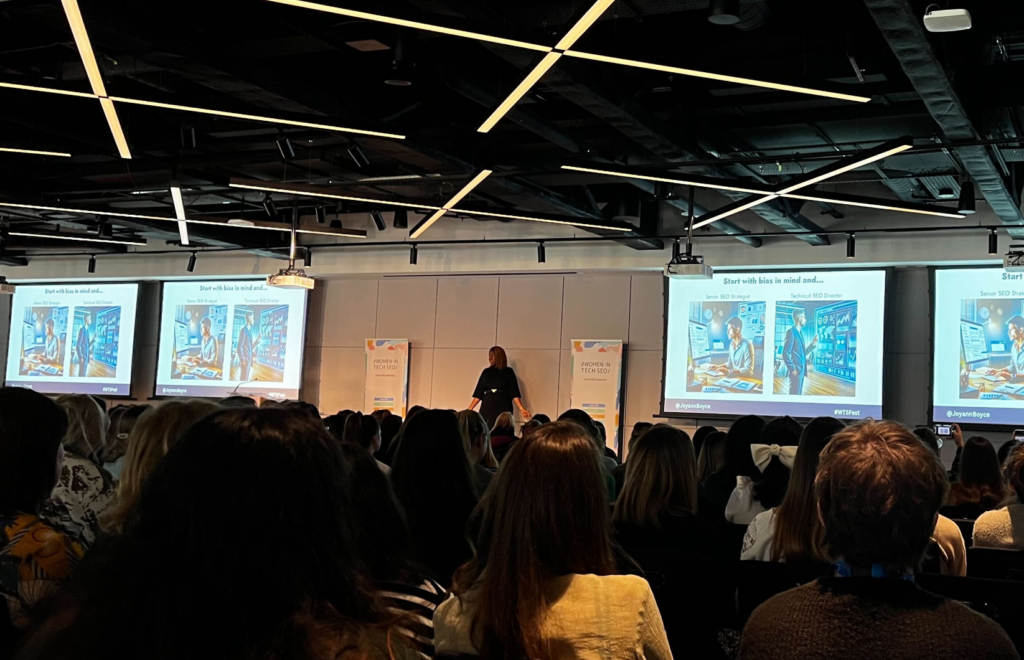
She suggests marketers start with bias in mind, particularly as they work across 3 key areas of marketing:
- Build an inclusive strategy: Audit where you are now – how inclusive is your brand language, images, and accessibility standards? Ask people from your target audience to provide opinions and feedback about whether or not they feel represented in your branding. And be sure to implement website accessibility best practices on your website.
- Visual representation: Consider diversity in your photos, illustrations, and influencer partnerships. Working with more diverse influencers can lead to higher engagement from your target audience if they feel better represented by who they see interacting with your brand. If you’re asking AI to generate visual assets for your content, be more descriptive in what you want the people in these graphics to look like. If you simply ask AI for an image of “a senior SEO strategist,” chances are it’s going to generate an image of a white man. Ask for diversity when you’re prompting AI — don’t rely on its standard output to represent your brand.
- Inclusive language: Language is always changing — Just think of the changing implications related to the word ‘woke’. Your team needs to be aware of all the current connotations of the language you use to represent your brand. AI tools that are specifically trained to combat bias can actually help here — for example, using an inclusive language tracker that can help flag any potentially biased or discriminatory language in your copy.
To learn more from Joyann, check out her forthcoming Inclued AI tools or follow her on LinkedIn.
Sophie Gibson: Where’s Your <head> At? (Talk Summary)
Technical SEO director Sophie Gibson (of Studiohawk) delved into some tech SEO specifics relating to <head> tags in her WTS talk.
She explained that the <head> tag on our pages is massively important because it holds key information search engines need to access your site, crawl it, process it, render it, and ultimately, index it properly to be served to users.
If Google can’t properly render your page, it makes it more difficult to index — and more difficult for you to get any traffic to your content. But the <head> is the single biggest render-blocking part of your page, explained Sophie.
And with potentially hundreds of scripts that may live in the <head> — including scripts for tracking, analytics, social linking, A/B testing, chatbots, etc. — it can quickly become unwieldy to properly optimize.
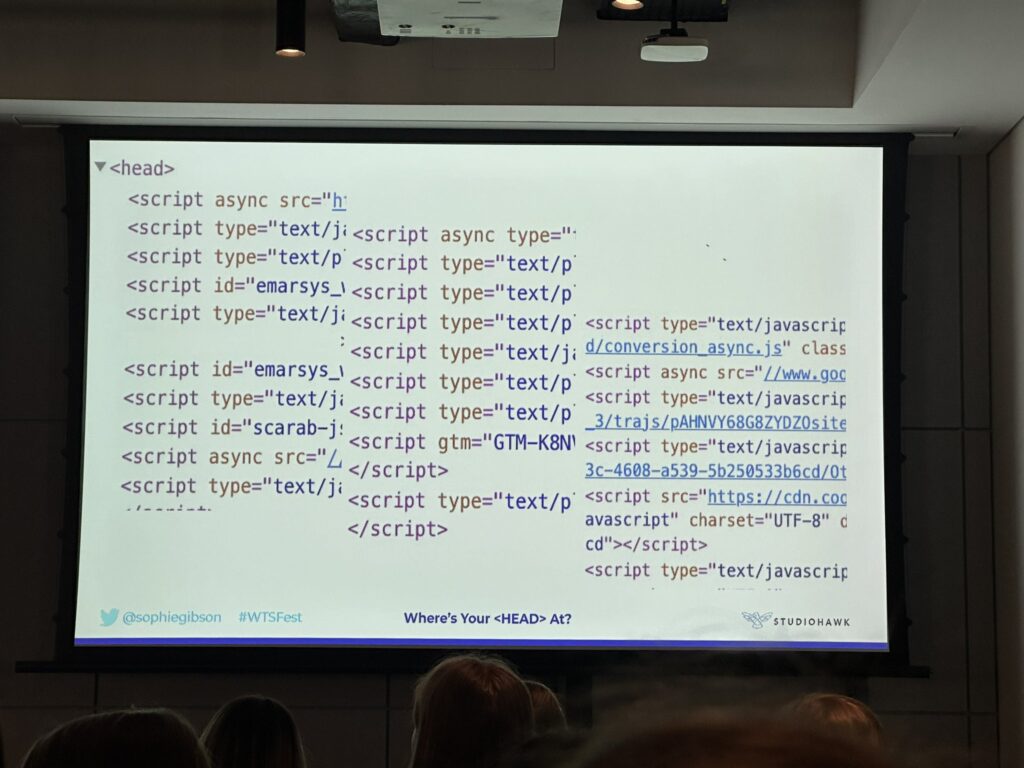
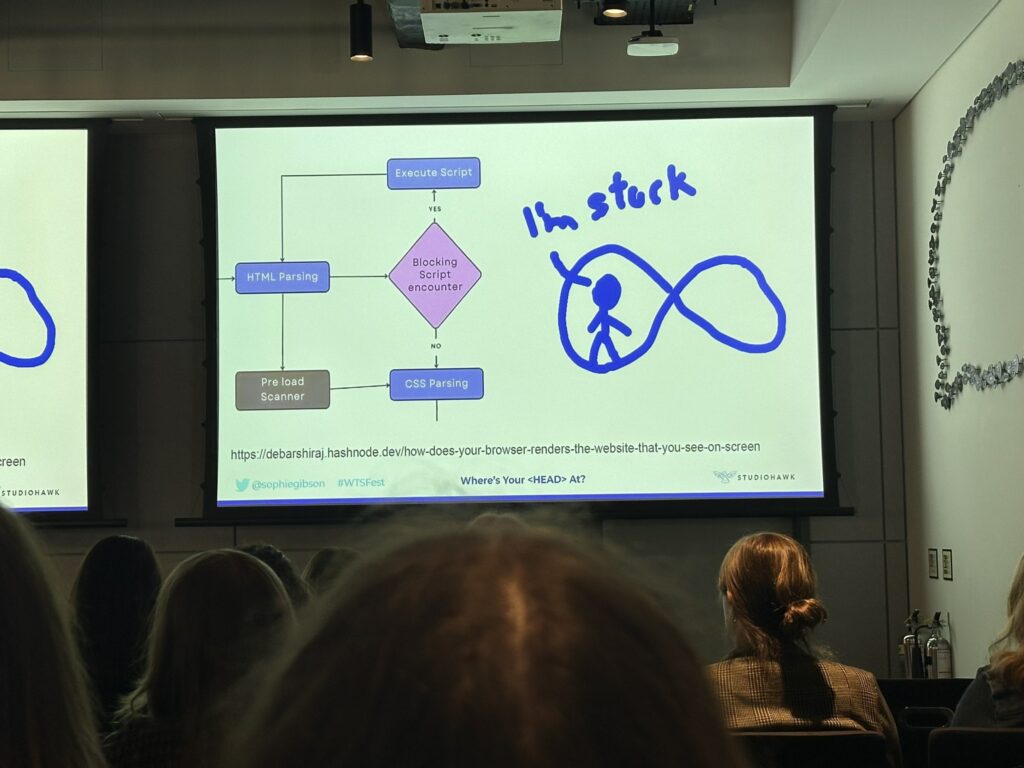
To better optimize your head tags, Sophie recommends using Dev Tools and the Capo Chrome extension to quickly understand the optimal order for elements included in your <head>.
You can examine your Lighthouse scores to create initial benchmarks before making any major changes to the <head>. Then use Dev Tools to replace the current order of head elements with the ones recommended by Capo and test the page again to see if the Lighthouse scores have improved with the Capo-suggested changes.
She also reminds SEOs how important it is to avoid any invalid HTML in your head tags. She explains that if Google encounters invalid HTML in the head, it may stop processing and rendering your content and just skip to the <body> — which means it could miss important SEO information that would have loaded after the invalid HTML in your head. To combat this, Sophie suggests moving the important SEO bits toward the top of your head to ensure search engine bots can access it before encountering any more chaotic elements that might cause it to skip the rest of the section.
For more from Sophie, check out her BrightonSEO talk on How to Conduct a Core Web Vitals Audit or follow her on LinkedIn.
Billie Geena Hyde: Technical SEO for Improved Accessibility (Talk Summary)
Billie Geena Hyde, SEO consultant, accessibility advocate, and founder of Uptake Agency, took the stage to discuss how technical SEOs can help improve website accessibility and emphasized the crossover between both disciplines.
She points out that approximately 15.8% of internet users in the UK and 18.9% of internet users in the US have a disability and can benefit from a more accessible and inclusive web. While clearly making more accessible websites is simply the right thing to do, if you are struggling to get buy-in from stakeholders for your a11y projects, there are tangible business benefits of website accessibility that you can point to as well.
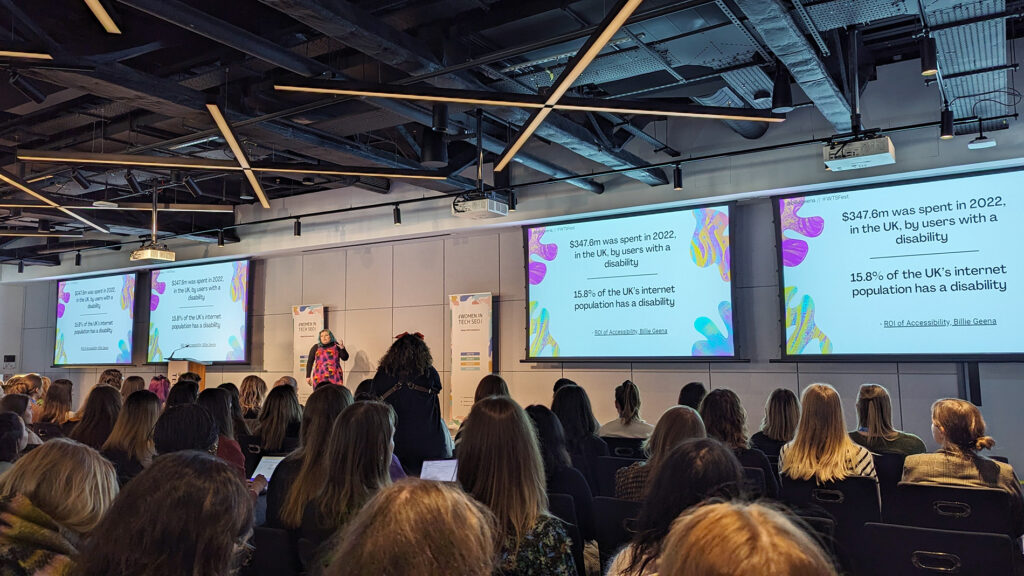
SEOs and website managers should also be aware of the upcoming European Accessibility Act coming into effect in 2025, as the governmental and legal requirements relating to digital accessibility are also getting stricter. The EU Accessibility Act is most likely to impact websites in the e-commerce, mobile banking, ticketing, and government sectors.
And for SEO professionals in particular, you’ll find that many accessibility best practices align with SEO best practices as well — meaning SEOs are particularly well-positioned to assist their teams with website accessibility projects.
As a starting point, she recommends checking some key accessibility aspects of your website, including reviews of:
- Images: Make sure all your images have alt text in place, appropriately title your image files, and set image dimensions. (“Image SEO is cool again!”)
- JavaScript: Ensure your page still loads all meaningful content when JavaScript is disabled. Also ensure all navigation functions and product listing pages still work — including via keyboard navigation — when JS is disabled.
- Cumulative Layout Shift (CLS): Make sure the page is still viewable and functional — and that the page text is not cropped or unreadable — at 200% zoom. At 200% zoom, a user should not have to scroll both horizontally and vertically.
- Links and Buttons: Make sure links are clearly distinguished from other text on your page and navigation of your site can be accomplished via keyboard. Buttons should have a tap target size of at least 48×48 px.
- Color Contrast: Make sure the contrast between text and other foreground elements against the background is at least 4.5.1. Make sure the colors are dyslexia-friendly.
In addition to using website accessibility tools to audit your domain, Billie recommends downloading a text-only internet browser and accessing your site through it. When viewed as a text-only web page, does the user get all the same information and experience as those who are viewing it with all of your JavaScript in place?
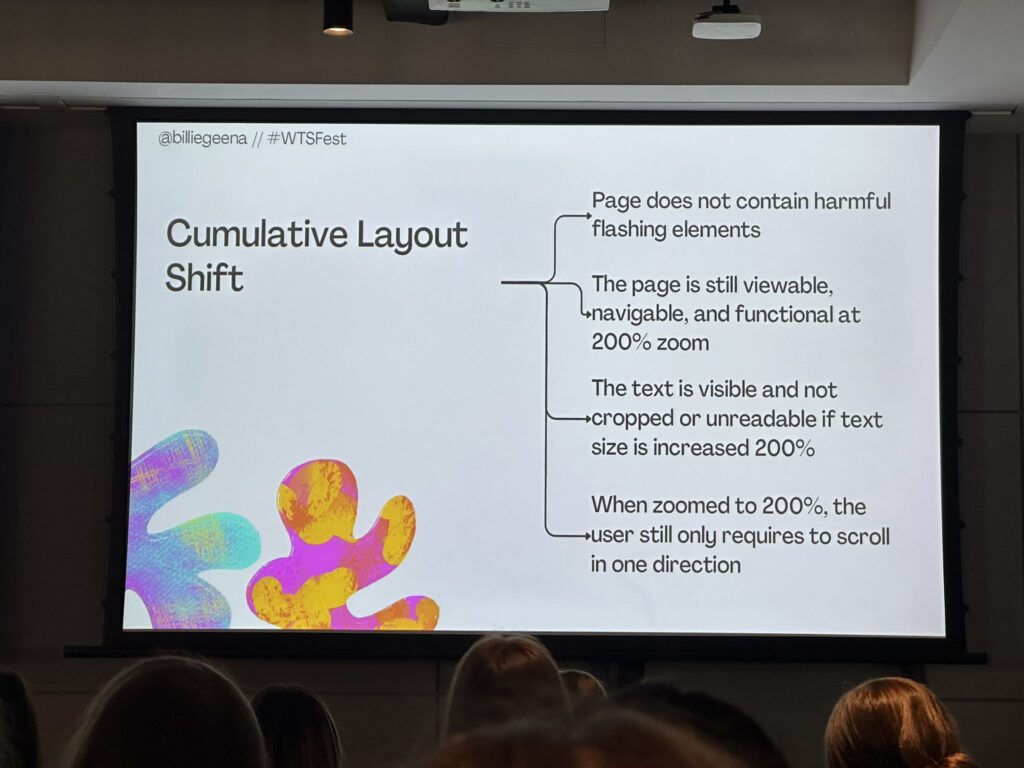
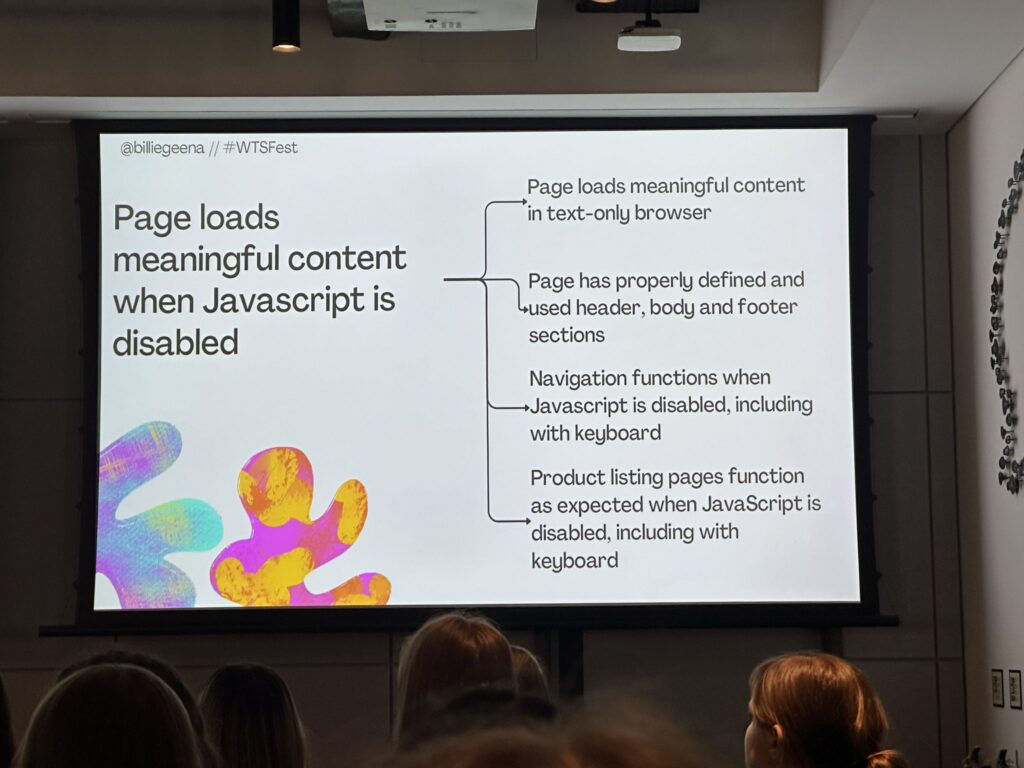
For more from Billie, check out her WTS slide deck or follow her on LinkedIn.

Explore more common website accessibility issues (and suggested fixes!) in Lumar’s A11y Issues Wiki.
Veruska Anconitano: The Future of User-Centric Search Experiences (Talk Summary)
Multilingual SEO & website globalization consultant Veruska Anconitano spoke on the importance of language in search.
“Understanding the evolution of language is crucial to understanding the evolution and future of search,” she says. Citing the Sapir-Whorf hypothesis, Veruska explains that language shapes and reflects cultural norms, behaviors, values, and worldviews. And that, like language itself, the way we search using our language evolves over time.
She recommends that we keep linguistic and cultural contexts in mind as we shape our SEO strategies. SEOs need to consider not only explicit search intent, but also implicit search intent — that is, the underlying reason behind a user’s search query that may not be explicitly stated in the search query itself. The implicit search intent of a query can vary based on language, location, and cultural contexts. And the search terms used for a particular query will also vary based on the person searching — she notes that the more someone is familiar with a topic, the less information they will put in their search terms. As SEOs, we need to consider all of these factors as we optimize website content toward certain search terms.
“A seed term can mean lots of different things based on when it’s searched, where it’s searched, or why it’s searched,” she explains. For example, the seed term “pancake” is likely to mean the food item — but it could also refer to a type of flat, thin camera lens used in photography.
Considering the more contextual elements of search terms in your SEO strategies goes beyond just targeting longer-tail keywords, says Veruska. Even long-tail keywords need additional context. She gives the example of someone searching for “fluffy pancakes Rory Gilmore made in Gilmore Girls” — is that person looking for an exact recipe, looking for a video clip, looking for examples of texture, cooking methods to produce the fluffiest pancakes, etc.?
SEOs should also consider broader situational and time-based contexts for their search terms. If news has broken recently about record-high gas prices and a surge in ‘Tesco club card’ searches occurs directly after this — chances are that this influx in searches is tied to a desire to find discounts on essential items so that the person searching can save money to pay the heating bills in the winter. This contextual information can help shape what content you’re putting out there for users making these searches and what other related terms you’re optimizing for.
To learn more from Veruska, visit iamveru.com or follow her on LinkedIn.
Professional Development Talks
In addition to the SEO-focused presentations, WTS attendees benefitted from professional development presentations from financial wellbeing consultant Talia Loderick (you can subscribe to her money coaching newsletter here!) and a session on future-proofing your career by Helen Pollitt, head of SEO at Car & Classic (check out her article, “SEO to MVP – thriving in your role in just 90 days” on the WTS Knowledge Hub!).
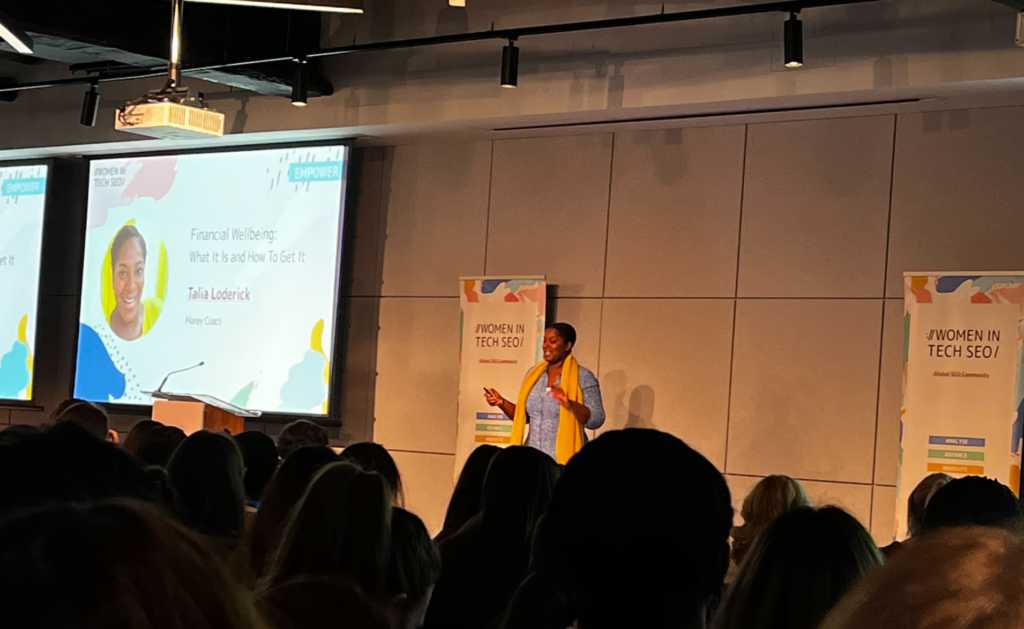
Upcoming WTS Events
Don’t miss the next Women in Tech SEO events coming later this year:
- June 7, 2024 in Berlin
- September 19, 2024 in Philadelphia (Sponsored by Lumar!)


